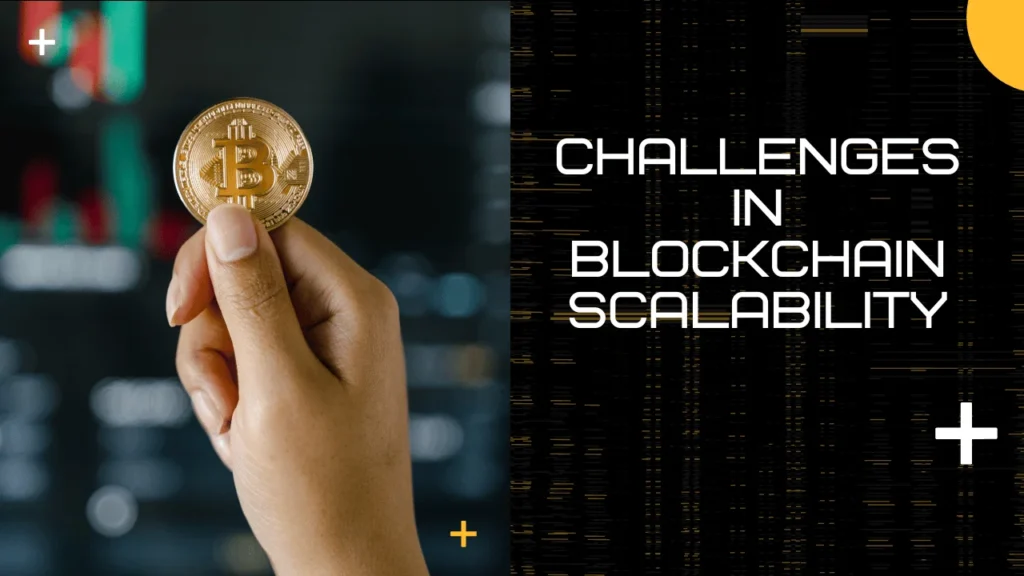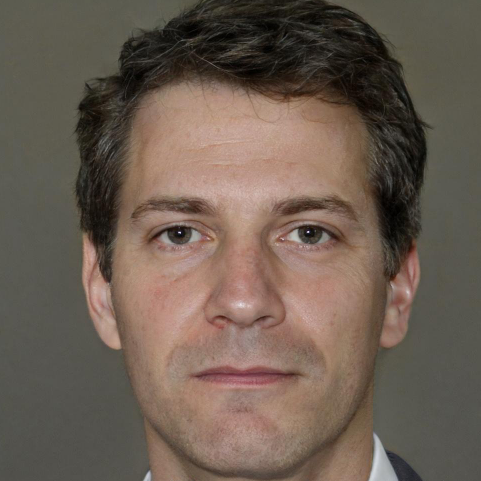In the rapidly evolving digital landscape, one question looms large: How is Blockchain Different from Traditional Database Models? As blockchain technology spearheads innovation, it disrupts conventional notions of data management and security. Unlike traditional databases, blockchain’s decentralized architecture enhances security, transparency, and trust in various applications. This fundamental contrast marks a significant shift, fundamentally altering how information is stored, accessed, and relied upon. Understanding these disparities is essential in navigating the complexities of modern data management and security.
Financial services, healthcare, supply chain management, and many more sectors stand to gain from blockchain technology. Blockchain technology is revolutionizing the way businesses manage transactions by providing enhanced security, data integrity, and a transparent and efficient system. Furthermore, there is a great deal to be gained by individuals who seek greater control over their data and transactions through the elimination of intermediaries. Anyone who cares about the safety, efficiency, and anonymity of their online financial dealings can benefit from this technology, not only techies.
Decentralized vs. Centralized Databases
Fundamental Architecture
Blockchain technology’s fundamentally decentralized character sets it apart from conventional databases. Blockchain relies on a distributed ledger system, as opposed to databases controlled by a single entity. By drawing this line of demarcation, we can make sure that our infrastructure is more robust and less susceptible to attacks.
Security Measures
Because of cryptographic hashing, which strengthens blockchain security, data added to the blockchain cannot be easily altered. This is in stark contrast to more conventional databases, where issues like data manipulation and illegal access can arise from a lack of decentralized control.
Autonomy and Control
Instead of having power concentrated in the hands of a single entity, blockchain technology distributes it among its users. This change promotes a more equitable online environment by increasing security and making data access and control more accessible to everyone.
Transparency and Trust
Blockchain technology offers unprecedented transparency, with all transactions being visible and verifiable by all network participants. In sharp contrast to the secretive nature of conventional databases, this degree of transparency fosters confidence among users.
Consensus Mechanisms
Utilizing consensus mechanisms such as Proof of Work or Proof of Stake, blockchain decentralizes validation from a central authority, in contrast to conventional databases. These procedures further solidify blockchain’s trustless and decentralized character by making sure all network participants agree upon all transactions.
Blockchain Security Features vs. Traditional Database Vulnerabilities
Immutability and Data Integrity
In order to protect the integrity of recorded data, blockchain technology guarantees that it cannot be changed once recorded. In contrast, traditional databases allow users to change data, which could compromise security and cause users to lose faith in the system.
Cryptographic Hashing in Blockchain
Data on a blockchain is doubly protected from tampering and illegal changes thanks to cryptographic hashing, an additional security measure that is often absent in conventional databases.
Consensus Mechanisms for Enhanced Security
Blockchain technology greatly improves system security and decentralizes control by relying on consensus mechanisms to validate transactions. Traditional databases’ centralized validation methods are more vulnerable to fraud and manipulation; this approach takes a different approach.
Trustless Environment
To facilitate transactions that do not necessitate reciprocal trust, blockchain establishes a trustless environment by virtue of its built-in transparency and security features. The old database model, in which users put their faith in a single administrator, is drastically different from this new environment.
Smart Contracts and Automation
Automating Processes with Smart Contracts
Smart contracts, which are introduced by blockchain technology, are contracts whose terms are written into code and can execute themselves. The elimination of middlemen through the automation of agreements improves efficiency, cuts costs, and simplifies processes, making it a clear winner over more conventional methods.
Blockchain Applications in Various Industries
Blockchain technology has many potential uses outside the cryptocurrency industry, including in healthcare, supply chain management, and the financial sector. The increased efficiency, transparency, and security offered by blockchain technology demonstrate its adaptability and promise to transform the way data is managed and transactions are conducted across all industries.
Challenges in Blockchain Scalability

Despite its benefits, blockchain still has a ways to go before it can handle massive amounts of data without experiencing performance or scalability issues. When it comes to processing and altering data, this is where conventional databases currently shine.
Blockchain vs. Conventional Databases
When it comes to large-scale applications, traditional databases typically offer superior performance in terms of speed and scalability. New solutions are being developed to address these challenges, and blockchain is constantly evolving. These solutions promise to close the gap in performance and scalability.
Enhanced Security and Data Integrity
Decentralized Control
The distributed ledger technology known as blockchain is radically altering the way we think about data security. Distributed ledger technology (blockchain) eliminates the need for a central authority figure to oversee data in conventional databases. This makes it very difficult for bad actors to compromise the data’s integrity and also removes a potential point of failure.
Cryptographic Security
When compared to conventional databases, blockchain’s cryptographic security measures are light years ahead of the competition. The data entered into each block of the chain is protected from tampering or alteration by employing cryptographic principles. Data vulnerability is still a major issue in traditional database models, so this degree of security is unprecedented.
Immutable Transaction Ledger
Once a transaction is recorded in blockchain, it cannot be changed because the ledger is immutable. This immutability gives the data more integrity and reliability than is possible with conventional databases by guaranteeing an unchangeable record of transactions. Wherever the veracity of past events is critical, such as in legal documents, financial transactions, and the like, this feature is invaluable.
Trustless Environment in Blockchain
Shared Source of Truth
Everybody in a blockchain system can see the same record, so it’s like a public record of all the truth. With this level of openness, everyone can check the legitimacy of a transaction, which eliminates the need for a central authority and creates a trustless environment.
Verification without Intermediaries
Blockchain technology eliminates the need for third parties to verify financial transactions. To further reduce the need for a trusted third party, transactions are double-checked by various nodes in the network using consensus mechanisms.
Data Privacy
Even though blockchain is open and public, it also provides ways to make data more private. Individuals and organizations can achieve a balance between transparency and privacy by controlling who has access to certain information through the use of encryption and selective transparency.
Blockchain Transparency and Accountability
Public vs. Private Blockchains
Various degrees of openness and responsibility can be achieved through the use of blockchain technology in both public and private sectors. Anyone can join and validate transactions on public blockchains because they are completely open and transparent. Compared to conventional databases, private blockchains provide more transparency, despite their greater control.
Audit Trails
An immutable record of all transactions is created by the very nature of blockchain technology. Compliance, financial audits, and other situations requiring precise records of past transactions greatly benefit from this function. Blockchain is the best option for applications that demand strict accountability because traditional databases might not provide an audit trail that is as clear or impossible to tamper with.
Accountability Through Consensus
Every node in the blockchain must reach a unanimous decision about a transaction’s legitimacy for it to be valid. Data integrity and trust are of the utmost importance in this system, which is why this collective agreement not only secures transactions but also holds participants accountable.
Blockchain Applications in Various Industries

Supply Chain Management
By increasing transparency, decreasing fraud, and improving product traceability from production to delivery, blockchain technology provides supply chain management with unparalleled advantages. Traditional databases have fragmented data and lack transparency, which can lead to inefficiencies and fraud. This visibility is a huge improvement over that.
Financial Services
When it comes to financial transactions, blockchain technology brings a whole new level of efficiency, transparency, and security. The capabilities of blockchain are revolutionizing traditional financial services, making them more accessible, secure, and cost-effective. This is true across a wide range of applications, from cross-border payments to secure lending platforms.
Healthcare Data Management
By creating decentralized, unchangeable databases of medical records, blockchain technology will dramatically alter the way healthcare organizations handle patient information. In addition to improving security and privacy, this solves an issue with existing traditional database systems—the lack of interoperability between various healthcare providers.
Challenges and Future Directions
Scalability and Performance Hurdles
Despite blockchain’s many benefits, problems with scalability and performance persist. Blockchain sharding and layer-two protocols are two potential solutions that could increase scalability without lowering security.
Regulatory Environments
Adapting to different regulatory environments is becoming more difficult as blockchain technology spreads. To guarantee that blockchain’s potential can be fully realized within legal frameworks, technologists, industry stakeholders, and regulators must maintain an ongoing dialogue about balancing innovation with compliance.
Interoperability Among Blockchains
The interoperability of blockchain systems is vital for the widespread adoption of blockchain technology. The future of blockchain technology depends on the continuous development of standards and protocols that allow them to interact and conduct transactions with one another.
FAQs
1. What makes blockchain more secure than traditional databases?
Data added to a blockchain cannot be easily altered due to cryptographic hashing and decentralized control mechanisms used by blockchain technology. Traditional databases, on the other hand, are susceptible to flaws like data manipulation and illegal access due to their centralized control.
2. How does blockchain achieve transparency and trust?
By recording all transactions in a shared ledger that is accessible to all nodes in the network, blockchain technology promotes confidence and openness. In a trustless environment, where trust is inherent to the system, all transactions can be audited and verified thanks to the immutable records on the blockchain and the transparency of the ledger.
3. Can blockchain replace all traditional databases?
Blockchain technology has many potential uses, but not every one of them will benefit from its decentralization, transparency, and security features. Situations necessitating high transaction throughput and quick data modification still suit traditional databases well. Each application has its own unique needs, so picking between blockchain and conventional databases is a matter of personal preference.
4. What are smart contracts, and how do they differ from traditional contracts?
Smart contracts are agreements whose terms are written into code and can execute themselves. Without human intervention, they execute and enforce a contract’s terms when certain conditions are satisfied. When compared to conventional contracts, which are prone to human error in interpretation and execution and necessitate manual enforcement, this efficiency and automation shine.
5. What challenges does blockchain face in terms of scalability and performance?
The inability to scale is one of the biggest problems with blockchain technology. Limitations in swiftly processing large volumes of transactions may arise from blockchain’s decentralized nature and the consensus mechanisms needed to validate transactions. Building new consensus algorithms, off-chain solutions, and layer-two protocols are all part of the effort to make blockchains more scalable.
Also Read: Finance and Technology with Cryptonewzhub.com
Conclusion
To sum up, blockchain technology’s arrival heralds a sea change in data management and security, providing a strong replacement for conventional database models. How is Blockchain Different from Traditional Database Models? Blockchain is a powerful tool in the digital era because of its decentralized design, improved security features, and the ability to automate processes with smart contracts. Expanding its applications across various industries, the technology is expected to further solidify its role in shaping the future of digital transactions and data integrity as it evolves and addresses its scalability challenges.

Timothy Jensen is an expert writer who specializes in the world of cryptocurrencies, including blockchain technology and Bitcoin. He has a passion for explaining complex topics in an easy-to-understand way. Timothy’s work aims to demystify the digital currency landscape for his readers.

